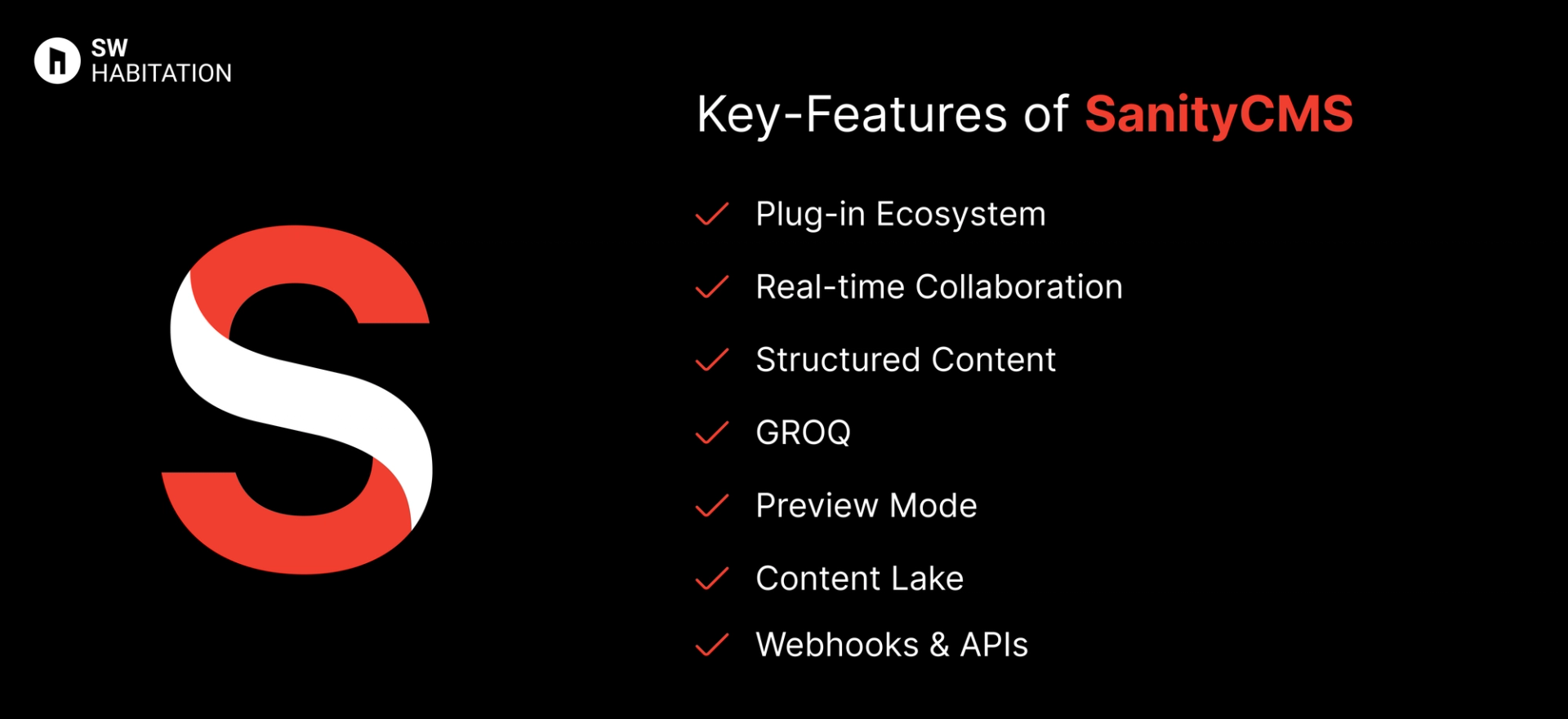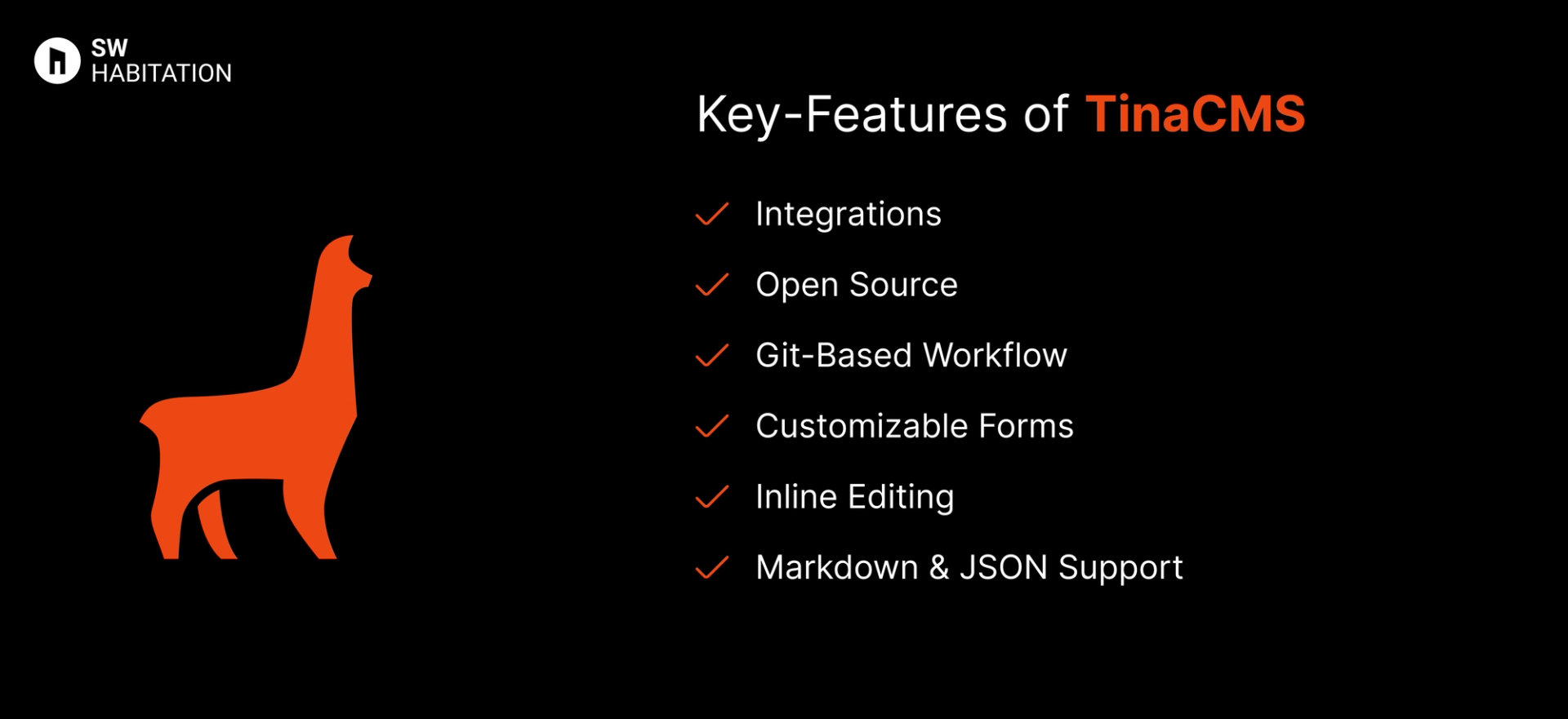Sanity vs. TinaCMS

Sanity

TinaCMS
You know, when you wanna make a website or a blog but don’t wanna mess with too much code? That’s where a CMS (Content Management System) comes in. It’s like a super easy tool that helps you add text, pictures, and videos to your site without needing to be a tech genius. You just log in, click a few buttons, and your content is live. It's quite simple, right?
What is Sanity CMS ?
Sanity is a real-time, headless content platform that offers a customizable content studio (Sanity Studio) and flexible API access. It is known for its structured content modeling and developer-first experience.
Key Features of Sanity CMS ?


- Plug-in Ecosystem : Extend Studio with community and custom plugins.
- Real-time Collaboration: Multiple editors can work together live.
- Structured Content: Flexible schemas allow deeply nested, rich content types.
- GROQ: Sanity's powerful custom query language.
- Preview Mode: Live preview content with your frontend in real-time.
- Content Lake: Sanity’s globally distributed real-time content backend.
- Webhooks & APIs: Easily integrates with static site generators and webhooks.
Advantages of Sanity CMS
- Headless Freedom: It can be used with any frontend or framework.
- Real-Time Editing: Ideal for collaborative workflows.
- Scalable Content: Handles complex data relationships and large-scale content.
- Great Developer Tooling: Excellent CLI, schema modeling, and APIs.
- Highly Customizable Studio: Designed the UI to your brand/editor needs.
Disadvantages of Sanity CMS
- Learning Curve for GROQ: GROQ is powerful but unfamiliar to most developers.
- No Native Image Hosting: it relies on integrations or external hosting for advanced media workflows.
- Requires Developer Setup: Initial setup and schema modeling may be overwhelming.
- Pricing: It an get expensive at scale or with advanced usage.
What is TinaCMS?
TinaCMS is an open-source, Git-backed CMS that brings real-time editing to the forefront. It integrates directly into your site’s codebase, allowing content editors to make changes and see them live instantly. Think of it as giving your content team superpowers they can twist content without diving into code, while developers still enjoy full control over the project.
It’s especially popular in the Jamstack ecosystem, working well with static site generators like Next.js, Hugo, and Gatsby.
Key Features of TinaCMS


- Integrations: Works with Next.js, Gatsby, and other static site generators.
- Open Source: Free and community-driven, with no vendor lock-in.
- Git-Based Workflow: Content is stored in your Git repository, making version control simple.
- Customizable Forms: Easily create forms for content editing.
- Inline Editing: Make changes directly on the page and see them live instantly.
- Markdown & JSON Support: Works seamlessly with markdown and JSON-based content.
Advantages of TinaCMS
- Customizable: Adapt it to fit your project’s structure and needs. Free & Open Source: No hidden fees use it as you like.
- Jamstack-Friendly: Works beautifully with static site generators.
- Git Integration: Content is version-controlled with Git.
- Real-Time Editing: See changes instantly while editing.
Disadvantages of TinaCMS
- Limited Ecosystem: Smaller plugin ecosystem compared to more established CMS options.
- Git Knowledge: Editors might need a basic understanding of Git workflows.
- Developer Setup Required: Needs developer setup initially.
Comparison Between Sanity vs TinaCMS
Use Cases of Sanity
- Jamstack-powered Apps: Integrates seamlessly with static site generators and frontend frameworks for fast, secure apps.
- Content-rich websites : It is Ideal for managing structured, scalable content across marketing sites, blogs, and documentation.
- Editorial Platforms: Enables real-time collaboration, custom workflows, and structured content for publishing teams.
- Headless eCommerce: Powers product content, editorial storytelling, and localization for modern eCommerce platforms.
Use Cases of TinaCMS
- Markdown Blogs: Perfect for blogs or documentation sites using markdown.
- Developer-Centric Workflows: Ideal for teams that use Git for content management.
- Real-Time Editing: Great when you want instant content updates.
- Jamstack Projects: Ideal for static site generators like Next.js and Gatsby.
Conclusion
Headless CMS platforms make managing your website very simple and easy. Whether you’re running a blog, online store, or business, they handle the tough stuff so you can focus on your content.
With a user-friendly interface and the ability to work with any technology, you can create a site that really fits your needs.
These platforms are flexible, secure, and can grow with you. They offer features like custom content, easy editing, and integrations with other tools. Choose the one that fits your requirements and start building your dream website today 🚀
Frequently asked questions
Is Sanity open-source?
Sanity Studio is open-source, the backend (Content Lake) is managed and proprietary.
What makes Sanity different from other headless CMS?
Real-time editing, schema customization, and GROQ querying offer extreme flexibility and control.
Can I self-host Sanity?
No, Content Lake is only available as a managed service, but Sanity Studio can be self-hosted.
Is TinaCMS good for non-tech users?
While TinaCMS is developer-friendly, content editors will also love its intuitive, in-context editing experience. With some initial setup, non-technical users can easily manage their content.
Can I self-host TinaCMS or use the cloud?
You can self-host TinaCMS, which gives you full control over your content management system, or you can opt for the cloud version for convenience and reduced setup time.
Can I use TinaCMS with Next.js?
Yes, TinaCMS is fully compatible with Next.js and can also be used with other modern JavaScript frameworks. It's particularly great when working with static sites.
Does TinaCMS support Markdown?
Yes, TinaCMS is Markdown-centric and integrates seamlessly with your existing markdown files. You can edit content directly in your Git repository or via the in-line editor.
